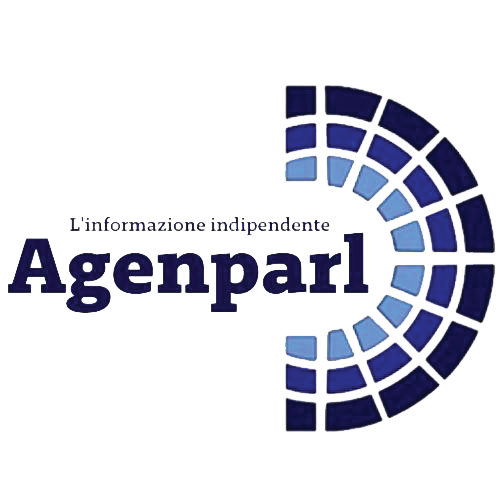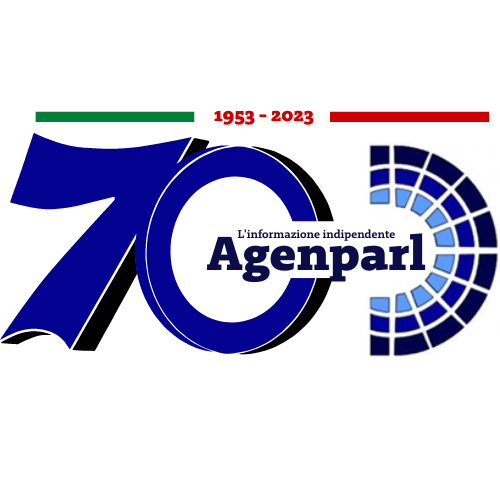 (AGENPARL) - Roma, 30 Maggio 2025
(AGENPARL) - Roma, 30 Maggio 2025(AGENPARL) – Fri 30 May 2025 A weekly compendium of media reports on science and technology achievements
at Lawrence Livermore National Laboratory. Though the Laboratory reviews
items for overall accuracy, the reporting organizations are responsible for
the content in the links below.
LLNL Report, May 30, 2025
Caption: Schematic illustrating how volcanic ash particles affect cirrus
clouds. (Image: Lin Lin/LLNL)
Fire and ice (and clouds)
https://www.earth.com/news/fire-and-ice-volcanic-ash-plays-a-surprising-role-in-cloud-formation/
From grounding airliners to fertilizing distant oceans, volcanic eruptions
are known for dramatic effects. Yet one influence has remained elusive: the
way ash lofted into the upper atmosphere changes the delicate ice clouds that
blanket the planet’s high altitudes.
A new investigation led by Lawrence Livermore National Laboratory (LLNL)
closes that gap. It reveals that volcanic ash grains from powerful eruptions
do more than just drift. They actively reshape the microphysical structure of
cirrus clouds, altering how Earth absorbs and releases heat.
The research team analyzed ten years of observations captured by NASA’s
CloudSat satellite radar and its companion CALIPSO lidar. These instruments
measure ice crystal size and count and map the height of ash-filled plumes
inside clouds..
“Our research helps close a significant knowledge gap about whether and how
volcanic eruptions influence cloud formation,” said lead author Lin Lin, a
scientist at LLNL.
Read More
https://www.earth.com/news/fire-and-ice-volcanic-ash-plays-a-surprising-role-in-cloud-formation/
Caption: Lab seismologist Gene Ichinose looks over an interrogator. (Image:
Blaise Douros)
LLNL interrogates earthquakes
LLNL turns Bay Area fiber into 8,000 virtual seismometers
Using an “interrogator” device to activate 50 miles of dormant
fiber-optic cable, Lawrence Livermore National Laboratory seismologists
created a network of 8,000 virtual sensors, recording March’s 3.9 magnitude
Dublin earthquake with unprecedented detail, achieving 1,000 times the
observational density of current seismic networks.
“The detail of the seismic wave field was unprecedented,” said Lab
seismologist Gene Ichinose.
This high-resolution monitoring was possible because each meter of the glass
fiber essentially acted as a tiny sensor, a strain gauge detecting minute
stretches and compressions in the ground. The team could then sample ground
motion every 10 meters at sub-millisecond intervals, allowing them to
distinguish even the faintest vibrations, ranging from even passing traffic
to the types of shockwaves (known as P- and S-waves) that the earthquake
generated. Ichinose added that the technology enabled the researchers to
track the seismic wave from the earthquake “propagating across the whole
Bay Area.”
Read More
Caption: Tracking target gain across fusion ignition experiments at the
National Ignition Facility.
Breaking records, taking names
Shortly after 4 a.m. on April 7, 2025, a bank of 192 ultraviolet laser beams
raced down the National Ignition Facility’s evacuated beamlines. In less
than nine billionths of a second, the beams — together peaking at ≈ 456
TW — vanished into a gold cylinder no larger than a pencil‑eraser.
Moments later, detectors lit up: the capsule at the cylinder’s center,
crushed to several hundred g cm⁻³ (≫ solid lead) and heated beyond 100
million °C, released 8.6 ± 0.45 megajoules of fusion energy from 2.08 MJ of
laser input — a target gain of 4.13.
That number may sound abstract, so let’s translate it into kitchen terms.
Eight‑point‑six megajoules is enough energy to bring roughly twenty‑six
liters of water from room temperature to a rolling boil — or to heat and
completely vaporize about three and one‑third liters. Modest as that seems
for an entire power plant, it remains the largest net‑positive energy pulse
ever coaxed from controlled fusion.
Read More
Caption: Example of filamentous fungal growth in the presence of different
antifungal doses added to four disks. (Image: Urbin et al.)
Finding fungal foes
https://www.msn.com/en-us/health/other/researchers-develop-assay-to-identify-antifungal-compounds-for-emerging-fungal-threats/ar-AA1FACvE
When left out on the counter for too long, a loaf of bread grows mold. That
mold is a common type of filamentous fungi, a microorganism that grows in
thread-like structures that can ruin baked goods.
But filamentous fungi can pose a much larger problem than just moldy toast.
They can cause crop blights and harm human health, particularly by infecting
immunocompromised people in hospitals. There are very few classes of
antifungal treatments available, and, like bacteria and viruses, fungi are
constantly adapting and developing resistances.. The potential pathogens are
also emerging and thriving in new locations.
In a study published in the Journal of Microbiological Methods, researchers
from Lawrence Livermore National Laboratory (LLNL) combined and refined two
established techniques into one new method to effectively screen chemicals
for their ability to kill filamentous fungi. This advancement enables
identification of new antifungal treatments and drugs.
Read More
https://www.msn.com/en-us/health/other/researchers-develop-assay-to-identify-antifungal-compounds-for-emerging-fungal-threats/ar-AA1FACvE
Caption: The Laboratory actively recruits and retains veterans to meet
critical workforce needs, including pictured members of the military and
veteran community. (Image: Garry McLeod)
LLNL commits to veterans
https://www.llnl.gov/article/52926/lawrence-livermore-national-laboratory-honored-2025-vets-indexes-4-star-employer
Lawrence Livermore National Laboratory (LLNL) has been recognized as a VETS
Indexes 4-Star Employer in the 2025 VETS Indexes Employer Awards. This
prestigious award highlights organizations that demonstrate exceptional
commitment to recruiting, hiring, retaining, developing and supporting
veterans and the military-connected community. LLNL is one of nearly 300
organizations honored this year.
“Lawrence Livermore National Laboratory has demonstrated exceptional
support for veterans and the military-connected community, earning the
organization one of the most prestigious awards possible in the VETS Indexes
Employer Awards program,” said George Altman, president of VETS Indexes.
“Even as more organizations than ever before are recognizing the uniquely
valuable skills that veterans bring as employees, the efforts of Lawrence
Livermore National Laboratory to recruit, retain, develop and support those
who served, as well as their families, stand out from the pack. Lawrence
Livermore National Laboratory is among the very best veteran employers, and
its program can serve as a model for others.”
Read More
https://www.llnl.gov/article/52926/lawrence-livermore-national-laboratory-honored-2025-vets-indexes-4-star-employer
——————————————————————————
Founded in 1952, Lawrence Livermore National Laboratory https://www.llnl.gov
provides solutions to our nation’s most important national security
challenges through innovative science, engineering and technology. Lawrence
Livermore National Laboratory is managed by Lawrence Livermore National
Security, LLC for the U.S. Department of Energy’s National Nuclear Security
Administration.
Read previous Lab Report articles online https://www.llnl.gov/news/lab-report
Unsubscribe from this newsletter
